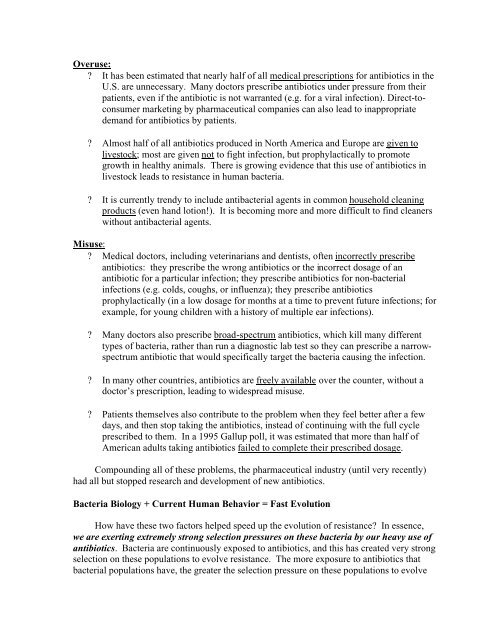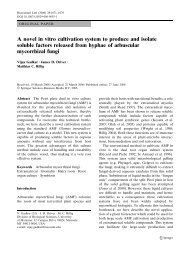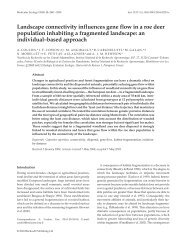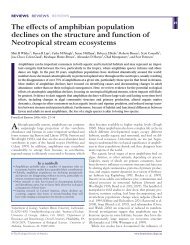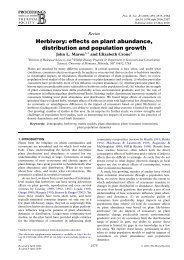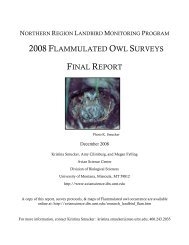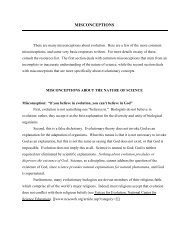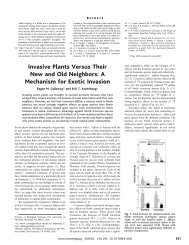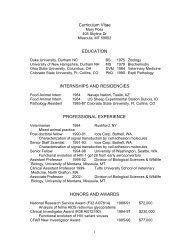Evolution of Antibiotic Resistance-Printable Format - Teach ...
Evolution of Antibiotic Resistance-Printable Format - Teach ...
Evolution of Antibiotic Resistance-Printable Format - Teach ...
You also want an ePaper? Increase the reach of your titles
YUMPU automatically turns print PDFs into web optimized ePapers that Google loves.
Overuse:<br />
? It has been estimated that nearly half <strong>of</strong> all medical prescriptions for antibiotics in the<br />
U.S. are unnecessary. Many doctors prescribe antibiotics under pressure from their<br />
patients, even if the antibiotic is not warranted (e.g. for a viral infection). Direct-toconsumer<br />
marketing by pharmaceutical companies can also lead to inappropriate<br />
demand for antibiotics by patients.<br />
? Almost half <strong>of</strong> all antibiotics produced in North America and Europe are given to<br />
livestock; most are given not to fight infection, but prophylactically to promote<br />
growth in healthy animals. There is growing evidence that this use <strong>of</strong> antibiotics in<br />
livestock leads to resistance in human bacteria.<br />
? It is currently trendy to include antibacterial agents in common household cleaning<br />
products (even hand lotion!). It is becoming more and more difficult to find cleaners<br />
without antibacterial agents.<br />
Misuse:<br />
? Medical doctors, including veterinarians and dentists, <strong>of</strong>ten incorrectly prescribe<br />
antibiotics: they prescribe the wrong antibiotics or the incorrect dosage <strong>of</strong> an<br />
antibiotic for a particular infection; they prescribe antibiotics for non-bacterial<br />
infections (e.g. colds, coughs, or influenza); they prescribe antibiotics<br />
prophylactically (in a low dosage for months at a time to prevent future infections; for<br />
example, for young children with a history <strong>of</strong> multiple ear infections).<br />
? Many doctors also prescribe broad-spectrum antibiotics, which kill many different<br />
types <strong>of</strong> bacteria, rather than run a diagnostic lab test so they can prescribe a narrowspectrum<br />
antibiotic that would specifically target the bacteria causing the infection.<br />
? In many other countries, antibiotics are freely available over the counter, without a<br />
doctor’s prescription, leading to widespread misuse.<br />
? Patients themselves also contribute to the problem when they feel better after a few<br />
days, and then stop taking the antibiotics, instead <strong>of</strong> continuing with the full cycle<br />
prescribed to them. In a 1995 Gallup poll, it was estimated that more than half <strong>of</strong><br />
American adults taking antibiotics failed to complete their prescribed dosage.<br />
Compounding all <strong>of</strong> these problems, the pharmaceutical industry (until very recently)<br />
had all but stopped research and development <strong>of</strong> new antibiotics.<br />
Bacteria Biology + Current Human Behavior = Fast <strong>Evolution</strong><br />
How have these two factors helped speed up the evolution <strong>of</strong> resistance? In essence,<br />
we are exerting extremely strong selection pressures on these bacteria by our heavy use <strong>of</strong><br />
antibiotics. Bacteria are continuously exposed to antibiotics, and this has created very strong<br />
selection on these populations to evolve resistance. The more exposure to antibiotics that<br />
bacterial populations have, the greater the selection pressure on these populations to evolve


